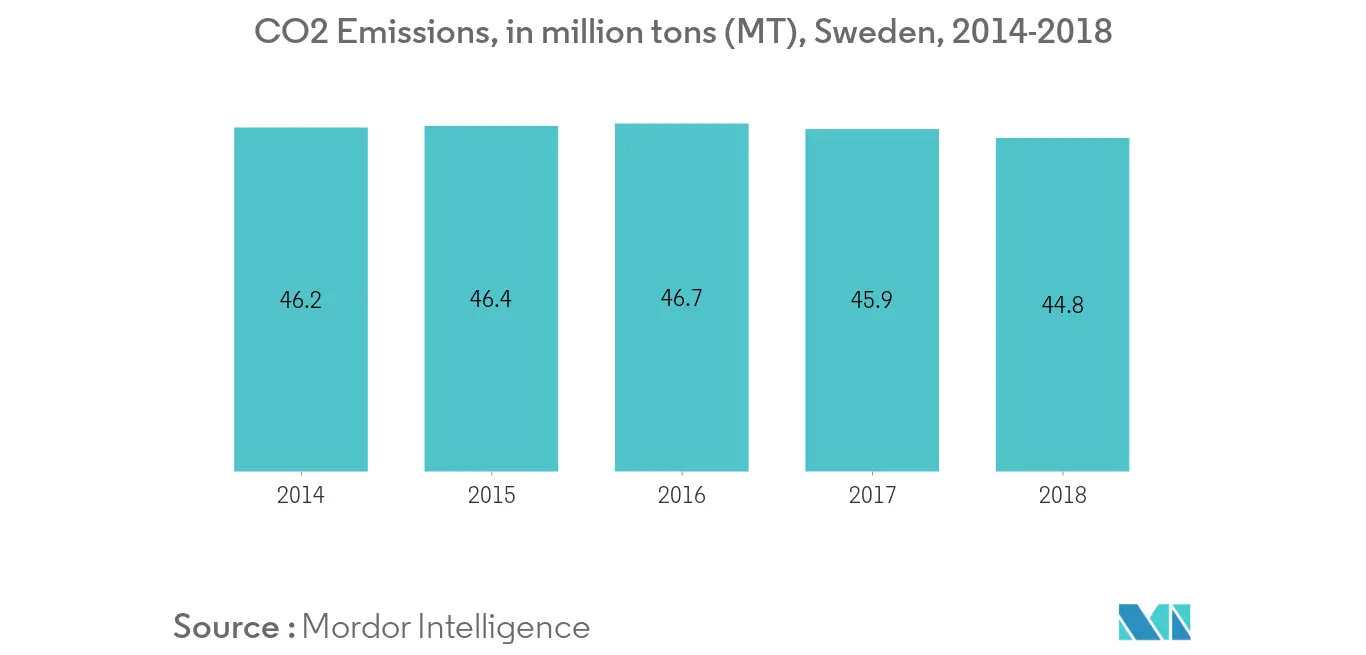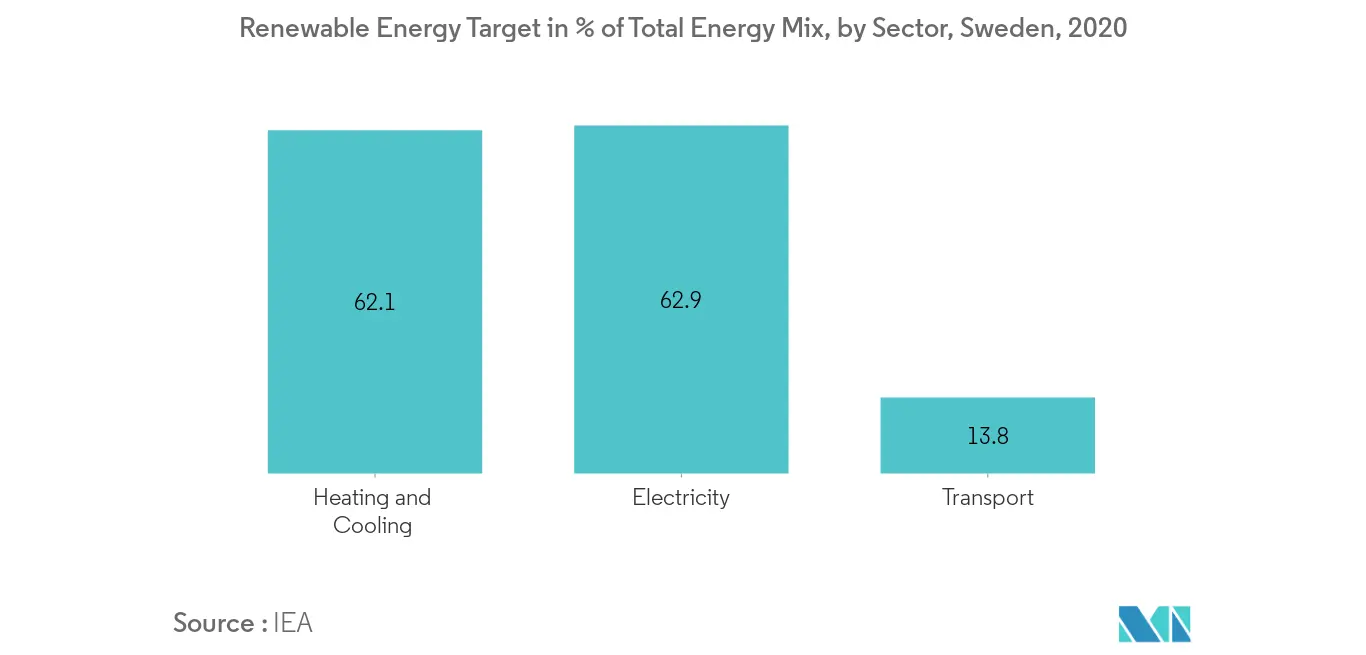Market Trends of Sweden Geothermal Energy Industry
This section covers the major market trends shaping the Sweden Geothermal Energy Market according to our research experts:
Increasing Investment to Drive the Market
- Investment for geothermal energy in Sweden is likely to get a boost, on account of its target to increase renewable energy share to reduce the CO2 emission by 19% by 2020. During 2018, nearly 44.8 million tons of CO2 were released, with a year-on-year (y-o-y) deduction of around 2.3%.
- During 2018, Sweden had an investment of over EUR 3000 million to install and to develop the geothermal energy sector in the country. Moreover, the country is exploring more areas for high-temperature gradient so that it can move on to power generation as well.
- As per the European Geothermal Congress, it is expected that Sweden is likely to invest EUR 3000 million in 2020 for the geothermal development activities.
- In addition to this, Baseload Capital, an investment entity, has issued a green bond of worth SEK 500 million, to finance low-temperature geothermal heat facilities.
- E.ON, a German-based electric utility company, is planning to build five geothermal power plants in Malmo by 2028, each with an installed capacity of around 50MWth. The company is investigating the geographical condition of the region and is expected to have an investment of around USD 6 million.
- Thus, the growing investment, along with the target to reduce carbon emission on account of change in climate, is likely to drive the market during the forecast period.

Increasing Deployment of Bioenergy to Restrict the Market
- District heating accounts for nearly 60% of the heat demand in Swedish buildings. During 2018, more than two-thirds of the heat supply to the district heating systems are based on biomass and waste.
- Bioenergy is a substitute to geothermal energy space heating and likely to act as a restraint for the market, with the growing popularity of bioenergy over the course of time.
- The total share of biomass for heating in the different sectors is around 45% in 2018. Heat output generated and sold by CHP (Combined Heat and Power) plants and heat plants represents about 35% of fuel/heat provided, of which, on average, 70% is produced from biomass (another 10% from the non-renewable part of waste).
- In the residential sector, direct use of biomass represents about 27% of fuel/heat consumption, and another 72% is provided through district heating (which is largely based on biomass).
- Moreover, with the target of increasing its share of renewable sources in district heating and cooling to around 62% by 2020, it is likely that the Swedish government is expected to focus more on bioenergy, on account of increasing waste in the country. This, in turn, is expected to hinder the growth of the market in the coming years.

